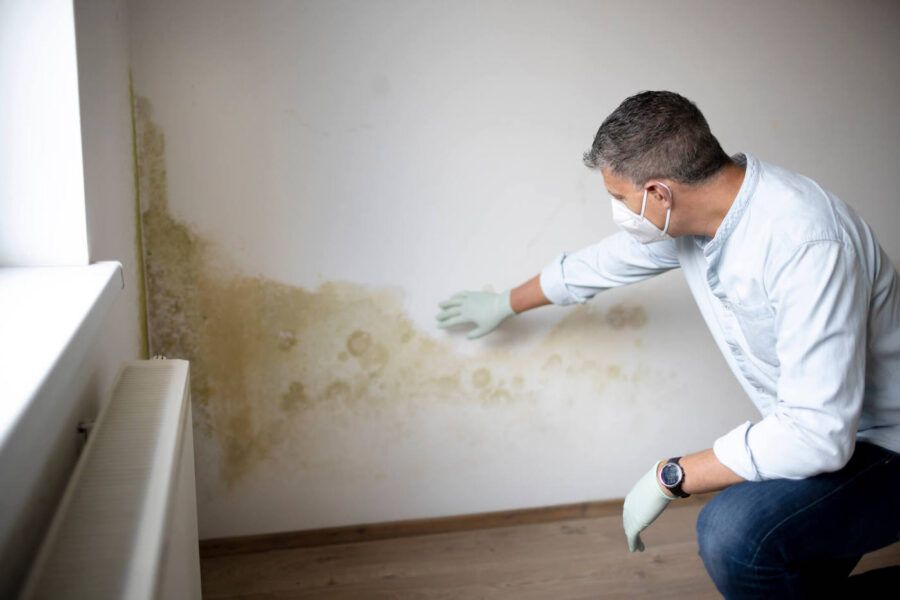Introduction
Mold is a silent intruder that can cause significant damage to your home and health. The question many homeowners ask is, does homeowners insurance cover mold? The answer is not always straightforward, as it depends on the cause of the mold, your specific insurance policy, and the extent of the damage. In this article, we will explore the details of mold coverage, exclusions, prevention tips, and what steps to take if you find mold in your home. Does Homeowners Insurance Cover Mold.
What Is Mold and Why Is It a Concern?
Mold is a type of fungus that thrives in moist environments. It reproduces by releasing spores into the air, which can spread rapidly if left unchecked. While some mold types are harmless, others can cause severe health problems, including respiratory issues, allergies, and even neurological effects.
In addition to health concerns, mold can weaken the structure of your home by affecting walls, ceilings, and wooden structures. This makes it crucial for homeowners to address mold problems as soon as they arise. Does Homeowners Insurance Cover Mold.

When Does Homeowners Insurance Cover Mold?
Generally, homeowners insurance covers mold damage if it results from a covered peril. A covered peril refers to specific risks or incidents that your insurance policy protects against. Here are some situations where your homeowners insurance may cover mold:
1. Sudden and Accidental Water Damage
- If mold results from a burst pipe or an unexpected plumbing leak, your insurance may cover it.
- Water damage from an appliance failure (e.g., dishwasher or washing machine) leading to mold growth may also be covered.
- If mold develops after water damage from putting out a fire, your policy will likely cover it.
2. Storm or Roof Leaks
- If a storm damages your roof, allowing rainwater to enter your home and mold forms as a result, your insurance policy might cover the damage.
3. Ice Dams
- During winter, ice dams can form on your roof, causing water to seep into your home. If mold results from this, insurance may cover it.
4. Water Damage from a Covered Event
- If mold results from covered events such as a broken water heater, HVAC malfunction, or accidental water damage, you may qualify for coverage.

When Does Homeowners Insurance NOT Cover Mold?
Homeowners insurance typically does not cover mold damage that results from the following: Does Homeowners Insurance Cover Mold.
1. Negligence and Poor Maintenance
- If mold develops because of long-term leaks, high humidity, or poor ventilation, it is considered a maintenance issue.
- Example: If you have a leaky roof and fail to fix it, your claim for mold damage will likely be denied.
2. Flooding
- Standard homeowners insurance does not cover flood damage. If mold develops due to flooding, you would need flood insurance for coverage.
- Solution: Consider purchasing a separate flood insurance policy through the National Flood Insurance Program (NFIP) or private insurers.
3. Humidity and Condensation Issues
- If mold forms due to high indoor humidity or lack of ventilation (such as in a bathroom without an exhaust fan), insurance won’t cover the cleanup costs.
4. Mold from Sewer Backups
- Most homeowners insurance policies exclude mold from sewer backups unless you have a specific sewer backup endorsement.

How Much Does Insurance Cover for Mold Remediation?
Even if your policy covers mold, insurance companies often place limits on mold coverage. Typical coverage caps range from $1,000 to $10,000, depending on your policy. Does Homeowners Insurance Cover Mold.
If you live in an area prone to mold growth, you may want to purchase additional mold insurance coverage (a mold endorsement) to increase the payout limits.
Steps to Take If You Discover Mold
If you suspect mold damage in your home, follow these steps:
- Document the Damage
- Take clear photos and videos of the affected areas.
- Make detailed notes about when and how you noticed the mold.
- Contact Your Insurance Company
- Report the mold issue as soon as possible.
- An adjuster will inspect your home to determine if the mold damage qualifies for coverage.
- Mitigate Further Damage
- Stop leaks or sources of moisture immediately.
- Use fans and dehumidifiers to dry out affected areas.
- Hire a Professional Mold Remediation Service
- Avoid DIY mold removal, as improper cleaning can cause spores to spread.
- Certified mold remediation experts can properly assess and eliminate the mold safely.
How to Prevent Mold Growth in Your Home
Prevention is key when it comes to mold. Here are some practical tips: Does Homeowners Insurance Cover Mold.
- Control Humidity Levels: Keep indoor humidity below 60% using dehumidifiers or air conditioners.
- Fix Leaks Promptly: Address plumbing, roof, and foundation leaks as soon as possible.
- Ensure Proper Ventilation: Use exhaust fans in bathrooms, kitchens, and attics.
- Clean and Inspect Gutters: Make sure gutters direct water away from your home.
- Use Mold-Resistant Materials: If renovating, opt for mold-resistant drywall, insulation, and paints.
- Regular Inspections: Check basements, attics, and crawl spaces for signs of moisture.
Conclusion
Mold damage can be costly and hazardous, making it essential for homeowners to understand their insurance coverage. While homeowners insurance may cover mold if it results from a covered peril, it often excludes mold caused by negligence, flooding, or high humidity.
To ensure you’re adequately protected, review your homeowners insurance policy and consider purchasing mold endorsements or flood insurance if needed. Taking preventive measures and addressing water damage promptly can help minimize the risk of mold problems in the first place.
By staying informed and proactive, you can safeguard your home, health, and finances from the costly consequences of mold damage. Does Homeowners Insurance Cover Mold.
Need expert advice on homeowners insurance? Contact your insurer today to discuss mold coverage options! VISIT – puzoy.com
READ MORE –











